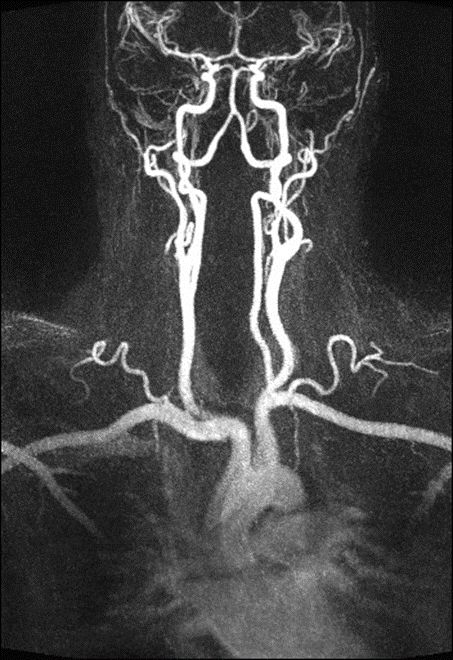MRI-FLOW SENSITIVE SEQUENCES
From NeuroRehab.wiki
Revision as of 10:30, 24 July 2023 by Dr Appukutty Manickam (talk | contribs) (Imported from text file)
SUMMARY
One of the great advantages of MRI is its ability to image physiological flow of fluids (e.g. blood flow) often without the need for intravenous contrast. This allows for the imaging of:
1. Arteries: MR angiography
2. Veins:MR venography
3. CSF flow studies/cytometry: CSF flow

Image: The above is an MR angiogram demonstrating flow through cerebral vasculature.
Reference(s)
Furman, Michael B., and Leland Berkwits. Atlas of Image-Guided Spinal Procedures. Elsevier, Inc, 2017.
Horowitz AL. MRI Physics for Physicians. Springer Science & Business Media. (1989) ISBN:1468403338.
Mangrum W, Christianson K, Duncan S et-al. Duke Review of MRI Principles. Mosby. (2012) ISBN:1455700843.